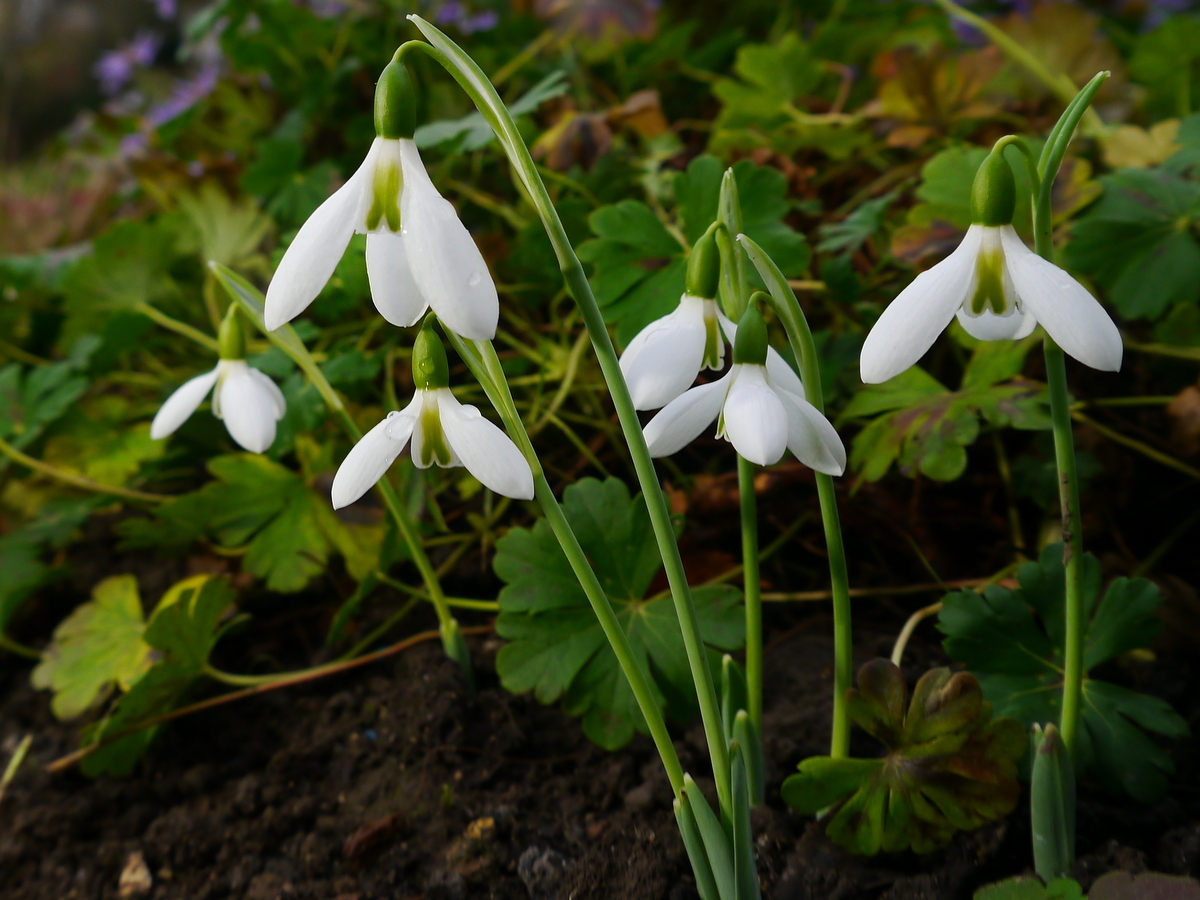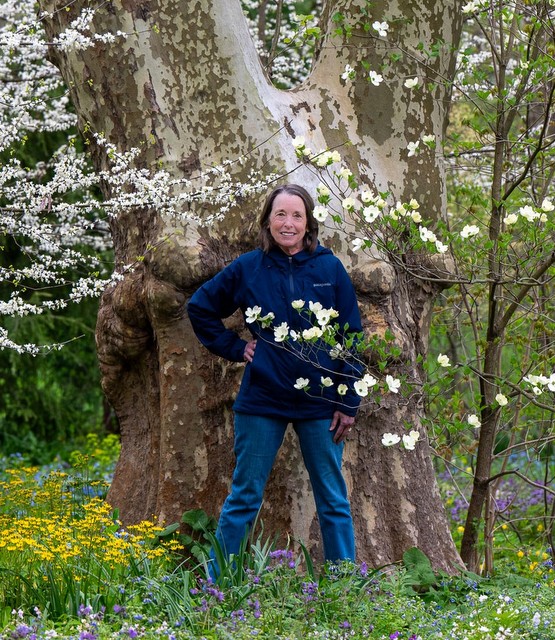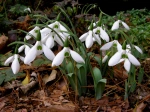 ‘Trumps’: has it all—vigorous, unique, beautiful; selected at the nursery of the wonderful John Morley, more here.
‘Trumps’: has it all—vigorous, unique, beautiful; selected at the nursery of the wonderful John Morley, more here.
Our current snowdrop catalogue, featuring several of the snowdrops in this post, is on line here, and we are taking orders.
I have considered writing this post many times, but always felt that picking my favorite snowdrop is like choosing your favorite child. I always tell my three sons that I don’t have a favorite—I love them all equally but for different reasons. However among my snowdrops, I do have favorites, and I know the reasons, which I will share with you along with photos of some of my most-liked Galanthus.
Nursery News: Carolyn’s Shade Gardens is a retail nursery located in Bryn Mawr, PA, specializing in showy, colorful, and unusual plants for shade. The only plants that we ship are snowdrops within the US. For catalogues and announcements of local events, please send your full name, mailing address, and cell number to carolyn@carolynsshadegardens.com and indicate whether you are interested in snowdrops. Click here to get to the home page of our website for catalogues and information about our nursery and to subscribe to our blog.
.
 ‘Diggory’: totally unique flower; beautiful pleated leaves with a stripe; multiplies well.
‘Diggory’: totally unique flower; beautiful pleated leaves with a stripe; multiplies well.
I have a modest collection of snowdrops by English standards and even compared to many of the larger American collections. This is intentional—although I have an extensive wish list in my head, I want to build my collection slowly and knowledgeably. This allows time to care for the existing collection, including dividing, fertilizing, mulching, relocating, disease prevention, record keeping, and labeling, etc. My current project is to have each snowdrop in two locations in my garden: an heir and a spare so-to-speak.
. ‘Viridapice’: tall and elegant with beautiful green markings; vigorous and easy.
‘Viridapice’: tall and elegant with beautiful green markings; vigorous and easy.
When Snowdrops: A Monograph of Cultivated Galanthus by Bishop, Davis, and Grimshaw was reprinted in 2006, it covered around 500 named snowdrop cultivars. It was possible, if you could locate them, to have all these snowdrops in your garden. When the second edition of A Gardener’s Guide to Snowdrops by Freda Cox was published in 2019, it described 2,400 named cultivars. Freda Cox’s companion volume More Snowdrops, issued in May 2023, profiles over 700 additional cultivars. It is not possible, nor do I think it is advisable, to collect all the existing snowdrops. A collector must be discriminating. To help you with your choices, I have come up with six reasons why I prize a snowdrop over many other contenders.
.
 ‘Godfrey Owen’: absolutely unique and beautiful from above and below; vigorous and early-blooming; selected by famous galanthophile Margaret Owen and named for her husband.
‘Godfrey Owen’: absolutely unique and beautiful from above and below; vigorous and early-blooming; selected by famous galanthophile Margaret Owen and named for her husband.
First, the flower must be beautiful and/or interesting. Among other characteristics I consider is the flower shape and size. I am partial to large, rounded flowers with spoon shaped outer segments. Although I generally prefer single flowers, in peonies for example, I also like double snowdrops—although many galanthophiles look down on them—because they bloom longer and, for me, are more often purely beautiful. The texture of the outer segments varies, and I am drawn to thick texture, which means the flower lasts longer, and I favor a pleated look. The color and placement of the marks is very important. I am partial to yellow snowdrops, dark emerald green marks, two-tone inner marks, and marks on the outer segments, especially virescent (green-shaded) outers.
. ‘Madelaine’: the best and most vigorous yellow in my garden—there are many yellows but a lot do not multiply well; selected by the famous Joe Sharman at Monksilver Nursery.
‘Madelaine’: the best and most vigorous yellow in my garden—there are many yellows but a lot do not multiply well; selected by the famous Joe Sharman at Monksilver Nursery.
Second, every snowdrop on my favorites list must be easy to grow and must multiply vigorously in my garden wherever I decide to place it. I do not treasure a snowdrop that doesn’t grow well for me no matter how much it thrives in other people’s gardens. And there will be no coddling of a picky snowdrop no matter how beautiful or rare. I will, however, move a snowdrop to a new location if it is doing OK but not thriving, if I have time….
. ‘Fly Fishing’: the name chosen by my sadly missed friend Alan Street is perfect; would recognize it anywhere; very vigorous.
‘Fly Fishing’: the name chosen by my sadly missed friend Alan Street is perfect; would recognize it anywhere; very vigorous.
Third, I must be able to recognize a favorite snowdrop without looking at the label, not only in my garden but in larger collections. This is a tall order in a field of over 3,100 named cultivars, many of which have very little to set them apart. However, through a combination of flower shape and markings, leaves, habit, and bloom time, all my favorites stand out.
. ‘Xmas’: large, elegant, upright flowers with gracefully curved spathes and wide blue leaves; early bloomer; selected at the US Botanic Garden and named by Carolyn’s Shade Gardens.
‘Xmas’: large, elegant, upright flowers with gracefully curved spathes and wide blue leaves; early bloomer; selected at the US Botanic Garden and named by Carolyn’s Shade Gardens.
Fourth, the habit and individual parts of a snowdrop can add greatly to its desirability. I am partial to tall and upright snowdrops with large flowers held well above the leaves. My favorite leaves are wide and generally blue, which is characteristic of Galanthus elwesii, but I also love the elegantly pleated foliage of Galanthus plicatus, especially if there is a pronounced white stripe. Ovaries (the little cap above the flower) with pleasing and compatible shapes, spathes (the bud covering) that arch elegantly over the flower, and pedicels (the flower stem) that hold the flower just so can add to a snowdrop’s allure.
.
 ‘Potter’s Prelude’: large and elegant flowers; best November-blooming snowdrop in my garden; named by my dear friend Charles Cresson.
‘Potter’s Prelude’: large and elegant flowers; best November-blooming snowdrop in my garden; named by my dear friend Charles Cresson.
Fifth, I lean toward snowdrops that bloom early, especially in November and December. As I describe more fully in my post December Blooming Snowdrops, click here to read, this is the time of year when I can most appreciate flowers of all kinds and not many snowdrops bloom then so the ones that do stand out. I would consider this a purely personal consideration, but it is a preference shared by the majority of my customers so I have to think it is widespread.
.
 ‘Lady Beatrix Stanley’: beautiful; no other double has the two elegant dots on the inner segments; multiplies rapidly; grown by Lady Beatrix Stanley (1877-1944) at Sibbertoft Manor.
‘Lady Beatrix Stanley’: beautiful; no other double has the two elegant dots on the inner segments; multiplies rapidly; grown by Lady Beatrix Stanley (1877-1944) at Sibbertoft Manor.
Finally, I love snowdrops with history behind them: who selected them, where, why? Unlike most other plants, we can often answer these questions about snowdrops and our relation to the plant is the richer for this added dimension. That is why I always provide snowdrop history in my catalogue and in blog post profiles of new snowdrops.
.
The snowdrops pictured above were chosen from the favorites in my collection because they illustrate the points I am making and meet most if not all of my criteria. However, I grow many more snowdrops that qualify as favorites and could have been included here. And I grow others that don’t make the grade, usually due to their slow growth, but which I still treasure.
.
Blogs are a lot more fun for everyone, especially the writer, when readers leave comments. Scroll down to the end of the page to the box where it says “Leave a Reply” and start typing—-it’s easy!
Note: Every word that appears in orange on my blog is a link that you can click for more information. If you want to return to my blog’s homepage to access the sidebar information (catalogues, previous articles, etc.) or to subscribe to my blog, just click here.
 This beautiful yellow snowdrop, ‘Spindlestone Surpise’, will be available in the 2025 Snowdrop Catalogue—no advance orders please.
This beautiful yellow snowdrop, ‘Spindlestone Surpise’, will be available in the 2025 Snowdrop Catalogue—no advance orders please. The very rare snowflake, Leucojum ‘Null Punkte’ will also be offered next year.
The very rare snowflake, Leucojum ‘Null Punkte’ will also be offered next year. I finally have enough of the double winter aconite, Eranthis ‘Richard Bish’, which I grew from seed, to include it in 2025.
I finally have enough of the double winter aconite, Eranthis ‘Richard Bish’, which I grew from seed, to include it in 2025. The lovely fall-blooming snowdrop, ‘Peter Gatehouse’, will also be available next year.
The lovely fall-blooming snowdrop, ‘Peter Gatehouse’, will also be available next year.










































































 Although the flowers are closed obscuring the full green inner mark, I think this photo gives the best view of the ethereal combination of ‘Rosemary Burnham’s’ emerald green ovary, bluish leaves, and outer segments fully washed in pale green.
Although the flowers are closed obscuring the full green inner mark, I think this photo gives the best view of the ethereal combination of ‘Rosemary Burnham’s’ emerald green ovary, bluish leaves, and outer segments fully washed in pale green. Although a single flower is lovely, I agree with Anne Repnow (Some Snowdrops, page 80) that a clump of ‘Rosemary Burnham’ is quite impressive—seen here in the Avon Bulbs display at the RHS Show.
Although a single flower is lovely, I agree with Anne Repnow (Some Snowdrops, page 80) that a clump of ‘Rosemary Burnham’ is quite impressive—seen here in the Avon Bulbs display at the RHS Show. The substantial flowers of fall-blooming ‘Cambridge’.
The substantial flowers of fall-blooming ‘Cambridge’. ‘Colossus’ flowering at Colesbourne Park where it was selected.
‘Colossus’ flowering at Colesbourne Park where it was selected. ‘Colossus’ blooming on 12/23/15 in my garden
‘Colossus’ blooming on 12/23/15 in my garden This photo gives a great view of ‘Betty Hansell’s’ unusual boat-shaped, pointed outer segments and prominent dark green mark.
This photo gives a great view of ‘Betty Hansell’s’ unusual boat-shaped, pointed outer segments and prominent dark green mark. ‘Warwickshire Gemini’ displaying its twin flowers
‘Warwickshire Gemini’ displaying its twin flowers ‘June Boardman’ combines a bright yellow ovary with an inner mark that is lime green at the apex and pale yellow near the base. Photo from Anne Repnow author of Some Snowdrops: A Photographic Ramble.
‘June Boardman’ combines a bright yellow ovary with an inner mark that is lime green at the apex and pale yellow near the base. Photo from Anne Repnow author of Some Snowdrops: A Photographic Ramble. We haven’t offered Galanthus reginae-olgae in 11 years so I am considering it new for the purposes of this post.
We haven’t offered Galanthus reginae-olgae in 11 years so I am considering it new for the purposes of this post. Galanthus reginae-olgae in Charles Cresson’s Swarthmore, Pennsylvania, garden.
Galanthus reginae-olgae in Charles Cresson’s Swarthmore, Pennsylvania, garden. ‘Rodmarton’ originated at Rodmarton Manor in Gloucestershire, one of my favorite snowdrop venues.
‘Rodmarton’ originated at Rodmarton Manor in Gloucestershire, one of my favorite snowdrop venues. ‘Scissors’ in Charles Cresson’s garden
‘Scissors’ in Charles Cresson’s garden ‘Walker Canada’ in the Avon Bulbs display at the 2017 Royal Horticultural Society Show at Vincent Square.
‘Walker Canada’ in the Avon Bulbs display at the 2017 Royal Horticultural Society Show at Vincent Square. G. plicatus ‘Walker Canada’
G. plicatus ‘Walker Canada’



